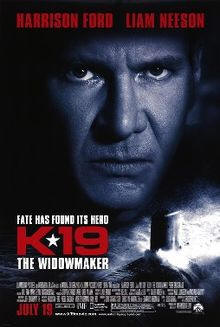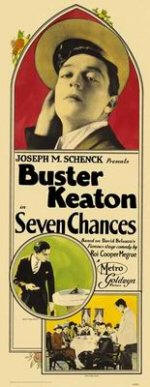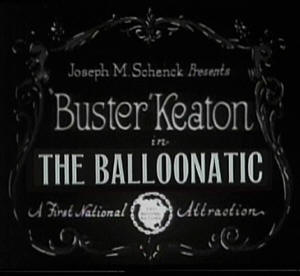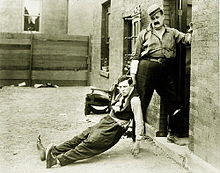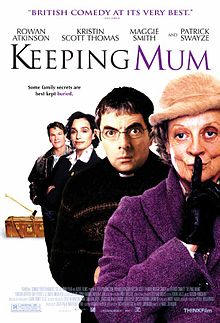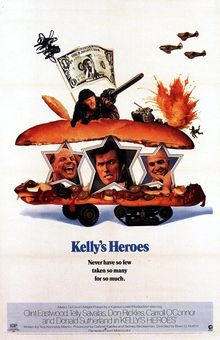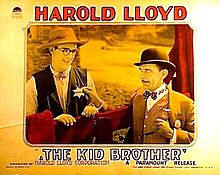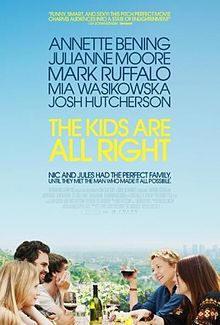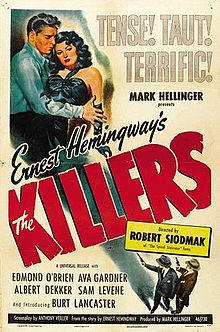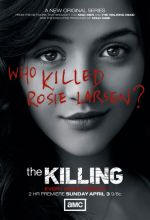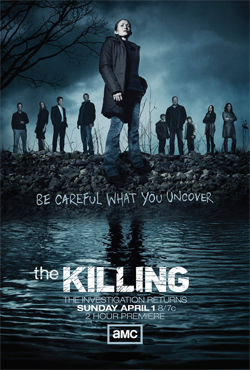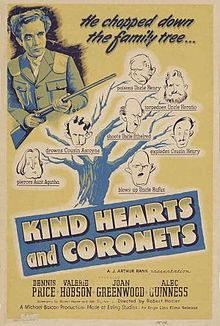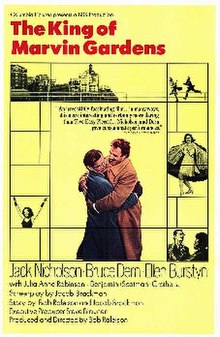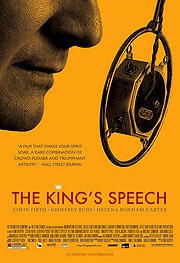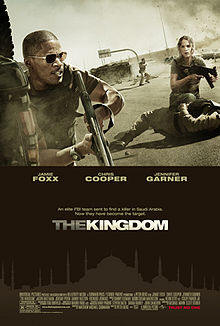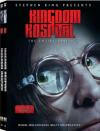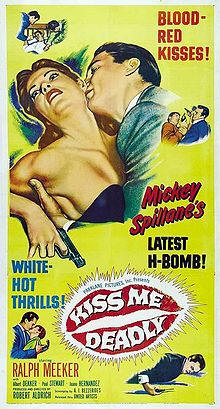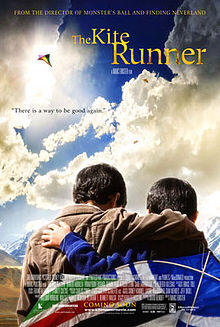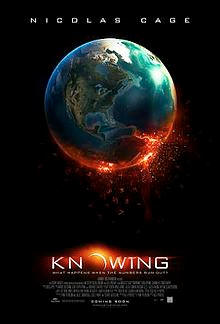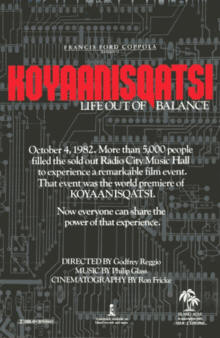|
Movies we've seen © 2004-2013 by John Varley; all rights reserved |
K
|
K-19: The Widowmaker (2002) This one was a bit of a mystery to me. It is a big movie, budget $100,000,000. (That still qualifies as big, doesnít it? And this was 2002.) It has two big stars, Harrison Ford and Liam Neeson. And I couldnít recall even hearing about it. I probably did, but Iím not recalling it. And it flopped, big-time, made back only $35,000,000 domestically. So, I wondered, where did they go wrong? Now that Iíve seen it, I can think of several reasons. First and most important, itís too long and too slow. Itís based on a true story of the Soviet Unionís first nuclear sub, which was rushed into service before it was ready to counter the American nuclear submarine threat. Itís a good story, too, and the scenes that do work, work very well. But larded into the middle of the tense stuff are long stretches of badly-acted, clichť-ridden scenes, and I have to say itís mostly the fault of Harrison Ford. Ford was one of the producers, and I think that is often a big mistake. There is extensive ďMaking ofĒ material on the DVD, and several people comment, diplomatically, as if it were a good thing, on his ďperfectionism.Ē That often leads to long pre-production times and unnecessary expense, because movie stars often have a less-than-complete understanding of what things cost, and how the technical crews can cheat things to look just as good as the real deal would look. Thus, every tiny aspect of the submarine was authentic. They even had advisors checking the spelling of Russian words on the subís instruments, which strikes me as about as foolish as Erich Von Stroheimís insistence, long ago, on having his Prussian Army extras wearing the correct silk underwear. Whoís going notice? Whoís going to care? Little things like that add up. So that might explain budgetary problems, but Ford also looks to be responsible for the fact that a lot of it just lies there like a dead fish. He is excruciatingly slow in delivering his lines. There are long, long, long dramatic pauses that could easily have been compressed and would have worked just as well, or even better. And the line, when it finally came, was often so predictable. Half a dozen times I could literally have spoken the next line out loud, and done it twenty seconds before Ford did. To the crew: ďYou are nothing without me.Ē Pause. Long pause. And Iím thinking, ďAnd I am nothing without you.Ē Bingo, give me a kewpie doll. When the action is all over there is a reunion scene at a cemetery and it drags on and on, maybe ten minutes. It wasnít needed at all, it should have been left on the cutting room floor, but if it was there, it could have been done in five minutes instead of ten. This is deadly in a movie that stretches to two hours and twenty-five minutes. Just a simple re-edit could easily have trimmed twenty of those minutes, and if anybody on the set had had the nerve to tell Harrison to get the lead out, another ten minutes could have been saved. One hour fifty minutes is about right for this story. But you donít tell a $20-million-per-picture star to speed it up, especially if heís the producer. Itís sad, really, because what they ended up with is a movie that alternates between scenes of genuine nail-biting tension, and scenes of real boredom. I imagine audiences snoozed in droves, and came out and warned their friends. And itís a damn shame, too, because it was obviously assembled with a lot of love. It was an important project to the writer and to the director, Kathryn Bigelow. Rather than go the CGI route, they found an actual Russian subóin Florida, of all places, where someone had failed at turning it into a restaurant and nightclub!óand had to practically re-build it. It was diesel sub, and about a third too short to be the real K-19, so they built a Fiberglas extension at great expense. For the real shots at sea they had a flotilla of 26 boats, including a Canadian frigate acting as an American destroyer, and a second Russian sub. There were six boats just to carry the safety rescue crew divers, because falling into the waters off Halifax, you had about two minutes before you would start to lose consciousness and sink like a stone. This is all very expensive. And itís sad because it could have been a real corker, up there with Das Boot and other tense submarine movies. Itís just a naturally tense situation, isnít it? You barely have room to turn around, the sea is trying to crush you, and now somethingís on fire, or a destroyer is trying to kill you. Iíve never seen a submarine movie when I didnít think, ďHow do these guys tolerate this?Ē Iíd be a basketcase in about an hour. What happened to the K-19 was a rupture in the reactor cooling system. To repair it, men had to go into the breached containment chamber, where they could work for ten minutes before being so badly burned by radiation that they immediately started to vomit up the lining of their digestive tracts. All seven who went in, died. Very strong, very disturbing stuff. And the passion for accuracy really works, too. Itís amazing how tiny these spaces are. In the extra material Liam Neeson, who is almost as tall as me (heís 6í4Ē) marvels that men taller than him actually served in these tin can death traps. He looks like Gulliver in Lilliput. What a shame. So I got to thinking, what could have been done, other than much tighter editing? I donít think that the fact that it was all-Russian, and that the crew was just as patriotic as an American crew might have been, is a problem. We sympathized with a Nazi sub crew in Das Boot, after all. This picture is not full of slam-bang action Ö but neither is the #1 movie of all time, Titanic. Both of those pictures are about boats that are in big trouble; the difference is, the Titanic goes down. Both pictures are rather ponderous in their stories; the difference is that the ponderousness sinks (so to speak) K-19, and not Titanic. So whatís missing here? Well, obviously, Kate Winslet. We need a girl. Romance under the high seas. The love story is what got teenage girls going multiple times, and really, if you canít get the women into the theater, though you can certainly do okay with a fan-boy action movie, you canít do titanically well. The emotional qualities on display here are male bonding in a military setting, sacrificing oneself for the good of your country and your shipmates, staying true to your oaths and obligations Ö and women just arenít interested. Now, Iím sure the potential for romance among the crew of the K-19 was just as frequent and just as clandestine as in our own donít-ask, donít-tell army Ö but thatís not going to play, either, is it. 20,000 Leagues Under Brokeback Mountain? I donít think so. I have it! Kate Winslet can stow away, like Leo DiCaprio did! Harrison Ford is conducting a hot and heavy romance on shore, and decides to smuggle his sweetie aboard, moving her around from room to room, disguising her as an able seaman. (Maybe somebody not quite as voluptuous as Kate. Maybe Gwyneth Paltrow. She played a girl masquerading as a man playing a girl in Shakespeare in Love.) And sheís a nuclear scientist, and when the reactor blows its top she has to figure out how to fix it, and send Harrison into the hot core Ö Hey, if you ever need a script doctor, Iím your guy! IMDb.com Das Kabinett des Doktor Caligari (The Cabinet of Dr. Galigari) (Germany, 1920) Unfortunately, we got a wretched copy of this from the library ... and it still knocks your socks off, visually. I canít think of any movie that shows a vision of insanity more imaginative than this. Everything is skewed, topsy-turvy. Walls and houses loom, streets meander crazily, rooms are made of random trapezoids. The story is pretty silly, even with the framing device that the original writers didnít want, but youíll never forget the images. IMDb.com Seven Chances (1925) The IMDb says this was Buster Keatonís least favorite of his feature movies. I suspect it was because it was based on a play that his producer, Joseph M. Schenck, had bought, and Buster wasnít impressed. The idea was that he had to get married, to somebody, anybody, by 7 that evening to inherit 7 million dollars. This probably made for an okay farce on the stage, but really wasnít Keatonís kind of material. The way I read it, Buster got all that plot business out of the way in the first half hour, proposing to anything in a skirtówhich is funny enough, but nothing to what comes lateróand then made up his own stuff for the ending. This involved the placement of an ad in a paper detailing the manís ďpredicament,Ē with the result that about 100,000 potential brides show up at the church. Well, it looks like that many. Lee remarked that they must have hired every woman in Hollywood as extras. Maybe not that many, but they couldnít have missed many of the fat, elderly, and homely ones. One of his most famous two-reelers was Cops, where through a series of misunderstandingsóand isnít that the basis for most comedy?óhe is pursued by what looks like the entire police force of Los Angeles. If you think that was a nightmarish scene, wait till you get a load of thousands of angry jilted women in bridal gowns chasing the poor sap through the streets! In the course of this epic chase, he manages to trigger a landslide of (obviously wood-and-canvas, but who cares?) boulders down a hillside, and has to dodge them all. I just learned that that whole sequence came about by accident. In the original shooting, he actually did dislodge some real boulders, and had to dodge them. In previews, this scene got the biggest laugh, so they went out again and did it with lots more rocks. Thus are classic comedy moments often born. In films of this era you will often see things that we would regard as racist today. There are two scenes here that have been objected to by some. In one, he comes up behind a woman that he canít see is black, does a double take, and hurries off. Well, sure, interracial marriage was pretty much unthinkable back then. (For a more disturbing bit of racismóthough nothing unusual by the standards of the timesósee Neighbors, below.) In another scene, he sits beside a woman reading a newspaper. He proposes. She shrugs, and raises the paper so that we can see itís written in Hebrew. Is this meant to mean that marrying a Jew is unthinkable? Maybe, but I interpreted it to mean she didnít understand him, because she didnít speak English. Then thereís a third scene where he sees a poster for a female actress and pays off the stage door guard to let him in. Once inside, someone moves a box that had been covering part of the poster (a frequent Keaton device, someone or something inadvertently blocking vital information) to reveal that the performer is Julian Eltinge, which meant nothing to me and Lee. But apparently everyone in 1925 would have known that this person was a drag queen (and a hell of a convincing one). He/she was very famous. I didnít know that! Thatís why itís funny when he comes back out of the theater and heís obviously had the crap beaten out of him. Many female impersonators are not gay. In fact, Eltinge went to some lengths to establish he was just an actor, and very masculine offstage. IMDb.com The Balloonatic (1923) A fairly minor two-reeler in the Buster Keaton canon. Which is to say, there are a lot of great sight gags, but not much in the way of characterization. IMDb.com Neighbors (1920) The IMDb (and I wonder how I ever survived without it) tells me that the set for this Romeo and Juliet in the Irish slums was made precisely to Keatonís dimensions, with hand and footholds places perfectly for him to do his trademark scrambling like a human fly. There are several jokes that today we would probably consider racist, involving Buster inadvertently ending up in blackface (from mud, or tar) and being mistaken for a Negro. I wasnít bothered by them, but another scene was offensive. He is hiding in a pile of laundry, and when he rises, covered by a sheet, the eyes of a black family nearby bug out, and itís ďFeets, do yoí stuff!Ē time, as the stereotyped superstitious darkies think theyíre seeing a ghost. Ugh. IMDb.com Keeping Mum (2005) Forty years ago a sweet and pretty young woman killed her husband and his lover, stuffed their dismembered bodies into a steamer trunk, and boarded a train for the seaside, blood leaking from the trunk into the baggage car. She's judged insane, but now she's paroled, and working as a housekeeper for the distracted vicar (Rowan Atkinson) of Little Wallop (pop. 57, but it looks like a lot more) and his sexually unsatisfied wife (Kristin Scott Thomas), who's thinking about having an affair with the swinish but buff golf pro (Patrick Swayze). Maggie Smith is the dotty old lady. This aspires to be like an old B&W Ealing comedy, such as Kind Hearts and Coronets, but it doesn't have that light, ironic touch. In fact, it takes itself too seriously, which is deadly for this sort of thing. Everything is a moral lesson, in a way, in that dotty housekeeper solves all their problems for them, from schoolyard bullies to a barking dog. It should be either much more antic, as Arsenic and Old Lace, or a lot edgier, as in any number of recent dark comedies involving murder. One or the other; you really can't have it both ways, and throw in sentimental treacle as well. IMDb.com Kellyís Heroes (1970) Clint Eastwood, Telly Savalas, Donald Sutherland, Don Rickles in a WWII action movie. What could go wrong? Well, plenty, as we all know, but this time it didnít. If you want a lot of action in a movie before the CGI era, this one is for you. I had a great time. I counted no less than six major battles before we even get to the big one, with a bunch of distinctly un-patriotic G.I.s trying to rob $14 million dollars in gold bars from a bank behind enemy lines in France. It was filmed in Yugoslavia, and Iíd love to hear more on the practical side of that. They were blowing up some very large buildings, and it was clear they were not made of papier-m‚chť, cardboard, or plywood, these were structures of stone, brick, and mortar. A very large bridge is brought down. All I can figure is there was a semi-ruined town left over from the actual war. There were a lot of burned-out buildings in the little town, and a lot more after the filmmakers left. It is all very authentic, too, according to the military wonks who write in to the IMDb pointing out the correct insignia and sniper rifles and such. Most of all it is the tanks. The Yugoslav army had actual Sherman tanks for the Americans, something that the makers of Patton couldnít find (they used more modern tanks). And though they didnít have German Tigers, they carefully made the old German tanks they did have look like Tigers. I will admit to a fascination with tanks. Thereís just something about the way they crash through buildings, roll over stone walls, crush cars. Iíve had an internal debate with myself for a long time. In the horrific event that I actually found myself a combatant on the battlefield, would I prefer to be in the infantry, or in a tank? (Iíd prefer to be thirty miles behind the lines shooting a long-range artillery piece, but that isnít part of the question.) One must feel so vulnerable outside with nothing but a tin pot helmet, with people shooting at you. Such a safer feeling inside a tank. And yet, a man on foot is so much more agile and maneuverable. He can jump, leap, dodge, hit the dirt. A tank is such a big, slow target. True, bullets bounce off it, but there are bazookas and rounds from other tanks that can instantly turn your safe haven into a boiling hell of supersonic metal ricochets. Think of a blender with white-hot blades. So, fast and vulnerable? Or slow and protected, but only to a point? And my conclusion is Öone hundred miles behind the lines, doing a great job typing up sermons as a sky pilotís assistant. Or three thousand miles behind the lines, training clerk-typists and quartermaster apprentices for general staff and supply. That would be Varleyís heroes: Stateside pencil pushers and stampers of forms in quintuplicate, without which a modern army just canít advance. We also serve who only stamp and weigh. IMDb.com The Kid Brother (1927) Harold Lloydís next-to-last silent movie. Iíd have to say itís a routine entry in his canon, but as always there are some bits worth seeing. Heís the youngest and weakest of three brothers and their he-man father. They all treat him with contempt but, of course, heís also the smartest, and brains win out in the end. He ends up saving the day and getting the girl, as he always does. The highlight is a chase through a grounded, listing shipwreck, pursued by a wild-eyed murderer. Comedy films would soon get a lot more sophisticated than this, but the knockabout humor still works. IMDb.com The Kid Stays in the Picture (2002) One of the most fascinating Hollywood biographies ever made. Robert Evans was a wonder boy brought very, very low, and he narrates his rise and fall. Wonderful movie. IMDb.com The Kids Are All Right (2010) Lots of Oscar nominations here, and all of them well-deserved. Annette Bening and Mark Ruffalo got Oscar nominations and Julianne Moore deserved one. Mia Wasikowska was very good, and Lisa Chodolenko, the director, got a screenwriting nomination, and it was up for Best Picture. I have no quarrel with any of that. I enjoyed it greatly, but I have to say that, when it was over, I realized that if not for the fact that it was a lesbian couple whose children wanted to know who their artificial-inseminator father was, it would have been a pretty ordinary film. Well-acted, well-written, but nothing new. So, it was the lesbian angle that got everybodyís attention, right? Iím not complaining, that was all good and Iím overjoyed that our society has progressed far enough that a Hollywood studio can make this hit movie and generate pretty much zero controversy. Iím sure the usual ultra-ďChristianĒ trolls complained, but I didnít hear about it. IMDb.com Kill Bill, Vol. 1 (2003) I have never been so conflicted about a movie. We passed on it on the big screen, and kept putting off renting it, looking at it like a visit to the dentist; something you gotta do but you donít look forward to. You got to see it because Quentin Tarantino is an amazing filmmaker ... but such an annoying one. Pulp Fiction, outlined and organized in the regular way, would have been nothing special at all. But thatís not the point is it? I donít think so. A movie is not a novel (I say it again), and does not even have to have a story at all. A two-hour film is actually 172,000 pictures that usually tell a story of some kind, but some of the most stunning movies of all time were nothing much more than a series of images: Un Chien Andalou, Koyaanisqatsi, Baraka, Winged Migration, Russian Ark. Pulp Fiction fascinated by the way it was told, by the weird situations, and by the snappy dialogue. One thing I would never dispute is that QT is a master of dialogue. (Another is that he always picks the right music; his tastes and mine in gut-bucket rock and roll are pretty much identical.) But what QT and I donít share is his enthusiasm for B movies, slasher pics, and Hong Kong and Taiwan kung-fu potboilers. My tolerance for such stuff is soon exhausted, and Kill Bill was touted as the ultimate. So I was dubious. I still am ... but I was awed. He is probably the most visually exciting director working today. I can always tell a Hitchcock film from his camera work, the way he makes the editing and the angle tell the story. I can always tell a Kubrick film by his incredible use of light; nobody lights a scene like Kubrick did, in films like Barry Lyndon, The Shining, and Full Metal Jacket. QT will use anything that comes to hand to tell his story, including a section in anime here, and most especially his fracturing of time. The first person Uma Thurman kills as The Bride (and twice when her name is said, it is bleeped) is the second one on her list; we see that one name is already crossed off. He always keeps you aware that you are watching a film, he wants you to be aware of the camera, like the Coen Brothers often do. As for story here ... it is about as basic as a story can be. The pregnant bride is slaughtered with her entire wedding party by Bill and his minions, a group she is or was a part of. But she survives, and sets out to kill them all. Thatís it. We donít know why; maybe Part 2 will tell us. An astonishing amount of gore is splattered on everything in sight, but most of the way I didnít care, it was pure comic-book stuff, done with such stunning visual flair that my jaw was dropping. It only got dull at about the same point most of these films get dull, during the climactic battle in the Japanese disco where The Bride takes on about a hundred swordsmen single-handed, killing them all. I couldnít suspend my disbelief that far. But even that was handled with flair. God knows I wouldnít recommend this to anybody with a weak stomach, but if you are really a student of film, you have to see this, love it or hate it. IMDb.com Kill Bill Again (2004) Actually, Kill Bill Vol. 2, but whoís counting? As I said above, I went to see KB1 reluctantly. It was so astonishing that I was really looking forward to KB2. And what I got was a deflating balloon. A very severe disappointment after the pyrotechnics of the first one. There are good things here, especially the character of Darryl Hannah and her fight with Uma, but overall it is slow and unconvincing. The only way to make material like this work for me is to move along so fast, at such a relentless pace, that you donít have time to think about how stupid it all is. This one gave me entirely too much time to think. To think that having a "special" sword is bunk. To think that there is no such thing as the "five fingers of death," or whatever they called it ... and you know, when you first hear of this special Kung-fu move, that it is how she will kill Bill. That sort of predictability is deadly, and not what I expect from QT. That people do not sit around and discuss things in a civilized way when they are about to attempt to kill each other. Basically, the whole 4-hour marathon fell apart whenever Bill showed up. I simply didnít believe in him. And I thought the ending was a total bore. IMDb.com The Killers (1946) This is about as noir as it gets. It stars Burt Lancaster (his first film, and the star quality is obvious), is from a story by Ernest Hemingway with a script by Anthony Veiller, Richard Brooks, and (uncredited) John Huston. Ava Gardner is the bad, bad girl, and Edmond OíBrien is the insurance investigator trying to unravel Lancasterís murder. He is killed in the first few minutes, unresisting, obviously having given up on life, and the rest of the story is told in flashbacks. Itís a damn good story. IMDb.com The Killing (2011) Seattle is the ugliest town in North America, maybe in the whole world. It rains every day, and especially every night, in Biblical proportions. Many of those ships in the harbor are lining up pairs of animals from the Seattle zoo, those who havenít drowned already. Penguins drown in the Seattle zoo. Fish drown. When it isnít raining, it is gray overcast, so low that you can rarely see the top of the Space Needle, which is slowly sinking into the mud. The last time the sun was seen in Seattle was in 1897, during the Gold Rush. It caused a panic. Fifty-six people died of third-degree sunburn. Hundreds were blinded. Just kidding. Seattle is a great town, Iíve been there many times. The whole Puget Sound area is delightful, with its many ferry boats and pleasure boats and houseboats, its mild climate, its hills and bridges and Pike Street Market and water, water everywhere you go. There must be more shoreline in Puget Sound than any urban area in America. The above paragraph is what you would think Seattle was like from watching this series, if youíd never been there. It is true, they get a lot of rain in the winter (so does the Portland area, where we live), but I have seldom seen the kind of torrential monsoons the producers have created here for atmosphere. I imagine the Seattle Chamber of Commerce thinks about just giving up every time the show comes on. How would you get people to come to a dismal shithole like this? I pity the cast. At least half their scenes are played in the rain, and to make ďmovie rain,Ē to make rain visible to the camera, you have to spray water in quantities you seldom see outside of your shower stall. These poor folks probably got wet more often and more thoroughly than anyone since the cast of Titanic. Okay, enough of that. This AMC series was based on the wildly popular Danish series ďForbrydelsen,Ē which means ďThe Crime.Ē It was also a smash in Great Britain. Reading about the plot on Wiki, it seems they have stuck very closely to the original, the main difference being that the Danish series was 20 one-hour episodes, and the American remake is only 13. Each show chronicles one day in the investigation of a nasty murder. We got caught up in itósomething we rarely doóand have been enjoying it. As I write this we have seen 11 episodes and I havenít the faintest idea whodunit. My original suspect seems to have been cleared. It is well-written and well-acted, and though the pace is slow, it doesnít bother me. I like it that when you have 13 hours to tell a story, you can take your time, devote some space to character rather than plot. They may have overdone it on the rain (see above), but thereís no denying Seattle is rainy, and it does provide a gloomy setting. The two main roles, new detective Stephen Holder (Joel Kinnaman), and veteran Sarah Linden (Mireille Enos) are very well-played. What is striking is that he looks to be about six-foot-five, and she tops out at about five-foot-nothing. The top of her head comes up to about nipple-height on him. (Iíd say itís comical, but the fact is Lee and I are a similar couple, and I donít see anything funny about that!) One thing I never, never suspected is that Kinnaman is Swedish. Not ďof Swedish extraction,Ē real Swedish, born and raised in Stockholm. This is his first English-language film! I swear, those Nordic people really learn their English. He has absolutely no accent, he passes easily as an American. One Week Later: No, could it be Ö? Not him, he was the last one I would have expected Ö but it looks bad for Ö Iím not saying. Two Weeks Later: So it really was Ö or could it be that Ö if not him, then who Ö? As you may have read, the ending was ambiguous. We think we know who did it, but the last two minutes Ö hell, the last two frames, leave room for doubt. It may not have equaled ďThe SopranosĒ as a mindfuck, but it was close. And, with a little chance for reflection, it didnít bother me all that much. At least, not as much as it seems it bothered a lot of people, judging from a few articles Iíve read. People are screaming bloody murder! They did after ďThe Sopranos,Ē too, and I adjusted to that. So Iím thinking about why people are so angry. It comes down to expectations. The murder mystery, in books and films, is a form, a dance performed between writer and reader or viewer, as stylized in its way as Japanese noh or an Indonesian shadow play. You violate it at your peril. Itís like stepping on the toes of your dance partner. This is whether it takes place in Agatha Christieís drawing room or the mean streets of Los Angeles. Both extremes of the genre have rules in common. And the primal rule, the one you canít violate, is that at the end you find out who did the killing. Readers will tolerate any number of red herringsóin fact, we want themóso long as, in the end, we know whodunit, and that it might have been possible, in the real world, for us to figure it out. And that exposes the basic lie behind these stories, doesnít it? The real world. Which bears little resemblance to the world of murder-mystery fiction. Most crimes go unsolved in the real world. A great many murders go unsolved. There are no neat little bows to wrap the real world in. Even if a case is resolved, there is always another chapter. But shouldnít writers stick to the rules? They know what we expect; how dare the writer fuck with our heads? Well, if all you want is just another entry in the mystery genre (and I do, often, I read a lot of them and enjoy them), sure, why not? But is no one allowed to break out of the mold now and then? To shock us with a teeny dose of reality? Personally, Iím grateful for those. Thatís what David Chase was really telling us when he left Tony S. and his family sitting in that restaurant with all those sinister forces seeming to be drawing in for the kill Ö and just stopped. Hey, viewer, this series was never like the usual tired old crap, why did you expect it to end with Tony coughing up blood? You can say it was a gimmick, but isnít wrapping it up neatlyóand nothing wraps things up quite like deathóthe real gimmick? The one weíve been conditioned to expect, even demand? The lie that comforts us, the one that says the real world always makes sense? Tony Soprano was a fictional character, and the series was ending. Live or die, his goombahs would be up to their old psychopathic tricks next week whether he was around or not. Yet we demanded closure. Shit, you get closure in every book and movie, donít you? Do you need it all the time? You could take a less forgiving attitude, I guess, and it may even be true: That same week it was announced that there would be a second season of ďThe Killing.Ē Okay, maybe the ending was calculated to bring viewers back next year, to see what happens next. If so, it would hardly be the first time a series ended on a cliffhanger, would it? And if so, the evidence so far is that they managed to alienate a large part of their audience. But I think they were maybe crazy like a fox. I think that when the new season opens most peopleólike me!ówill be tuning in to see more. IMDb.com The Killing (Season Two) (2012) Seattle is just as cold, dark, and rain-swept this season as it was the last. As if this wasnít bad enough, almost all the scenes are shot in rooms with almost no lighting, and most of the actors are shot against a window, backlighted. Very stylish, I know. In spite of this, we were involved in it all and looked forward to Sunday. The plot got insanely complicated, with red herrings all over the place, but I guess thatís what makes for a good story. They didnít cheat us with a ďContinued next year!Ē ending this time. We found out who murdered Rosie Larsen, and it came as a surprise to me. Overall, we enjoyed it, but might have preferred to see it on DVD so we could watch one after the other. Thatís my preference, with serial television. IMDb.com Kind Hearts and Coronets (1949) There are very few movies whose plot is completely turned around by the very last line. This is one. (Another is The Taking of Pelham One Two Three. The original, not the piece-of-crap remake. Only the last line in Pelham is a sneeze!) And that is after a saved-at-the-last-moment twist that you think has it all wrapped up. Dennis Price plays a man raised in poverty because his snotty relatives disowned his mother for marrying an opera singer. Through some obscure law, he could become the Duke of Chalfont Ö but twelve other heirs stand in his way. He sets out to kill them all, and manages to off six of themóall played by Alec Guinness, plus two more who die natural deaths. Eventually he becomes the Duke. Since he is writing this from a prison cell where the hangman has just arrived, we know something has gone wrong, but Ö I canít tell you the ironic way he is tripped up, nor about subsequent events. I will say that it is a masterpiece, one of the earliest and one of the best of the Ealing Comedies, which were mostly made in the early Ď50s. This is a must-see. IMDb.com King Arthur (2004) Interesting idea. We know that King Arthur and all that Lady in the Lake, Holy Grail, Merlin the Magician stuff is legend, not history ... but what if itís legend based on history? So that in the year 452 there really was an Arthur, a Guinevere, a Lancelot, and all the other usual suspects? Thatís the premise here, and it looks good. Talk about your Dark Ages. Rome is falling and pulling out of Briton in the face of Saxon barbarian invasions. Arthur and company are sort of indentured knights fighting for decadent Rome. Nobody asks the Britons themselves what they want, of course, they seem mostly interested in harvesting filth and painting themselves blue ... and you know, itís just not possible anymore to go over this ground without being reminded of that masterpiece, Monty Python and the Holy Grail. I kept expecting a couple of the serfs to get into a discussion something like this:
Sorry, I just couldnít help it. Anyway, it is the muddiest film Iíve seen since Kenneth Branaghís Henry V, but thatís good. I donít suppose 452 was particularly clean, especially if you were a anarcho-syndicalist peasant being oppressed by a foreign dictatorship. The look of the film is quite nice, and itís fun to see the story unfold. However, it is a Jerry Bruckheimer film, and that means a lot of extended action scenes. No problem with that, this is a story of war. But they go on too long for me and Lee, and there probably arenít enough of them for real action movie addicts. The one at the end seems to take forever, and isnít very believable. I must say, though, that even Lee liked the middle battle which took place on a frozen lake that was cracking beneath the warriorsí feet. It was a cold night when we watched this, and believe me, I had a hard time watching the horribly under-dressed people out in the snow and blowing wind. Then I find out it was actually filmed in Ireland, during one of the hottest summers on record! All that snow and ice was Styrofoam and CGI. The actors were probably sweltering in their furs. The movie business is an odd one, no question about it. IMDb.com King Kong (2005) First, itís very, very good in most respects. The effects are stunning, the story is a bit deeper than the original, and Andy Serkis as Kong is so good that the Academy will almost certainly ignore him for his work again, as they did for his portrayal of Gollum, because they canít imagine that thereís a real actor behind the CGI performance. He studied gorillas for months to get the behavior right, and his Kong is totally a gorilla, instead of just a big ape. Eventually theyíre going to have to realize that work like this is no different from an actor in make-up, and when has that ever turned off an Academy member? Second, itís way, way too long. Three hours, for a simple story like this? Come on. Recall that Fay Wray was never less that totally terrified by Kongís attentions, which strikes me as a completely sane response. I loved the scene where Naomi Watts dances for her life, bonding with the Big Guy, but after that, making her an actual advocate for Kong, putting herself in danger, struck me as over the top. The story has been described as the love story of a woman and a 24-foot ape, but to me itís a story of a boy and his dog. Kong clearly likes her, and I can believe that. But he likes her because she can do fun tricks. My take: heíd eventually tire of her and find a new toy. More drawbacks: Letís face it, Adrien Brody is a stiff. Iíve seen hat-racks with more of an emotional range. It was pure fluke that he landed the perfect role for himself, a man so deep in hiding that he barely speaks at all through a long and grueling movie, The Pianist, that won him the Oscar. And though I love Jack Black, he was wrong for this movie. This one belongs to Naomi Watts and the brilliant Andy Serkis. IMDb.com The King of Marvin Gardens (1972) This is the movie that Bob Rafelson and Jack Nicholson made right after Five Easy Pieces, while they were both hot. Rafelson was never this hot again. Itís a quirky little film, shot almost entirely in Atlantic City in the winter, before the town was infected with casinos. The boardwalk is almost deserted in every shot, unlike it was the one time I visited, in about 1964, when it was swarming with people and a lot of fun, in spite of looking about as rundown as it does here. Itís one of the chief pleasures of seeing the film, seeing the city like that, because I wasnít all that taken with the story. Jack is uncharacteristically subdued as the quieter brother of Bruce Dern, who is as flamboyantly loud as always. His face is always registering either manic glee or deep suspicion. How does he manage that? Is he like that in real life, I wonder? Is it just a matter of being typecast? Whatever. Heís a con man whose schemes Jack is pretty tired of, but seems unable to completely resist. From the first words out of his mouth you know heís a loser, a man who can talk big and never delivers. The guys are accompanied by Ellen Burstyn as a faded beauty queen (all three of these people looking so, so young!), and Julia Ann Robinson, her stepdaughter, an actress who is damn good and either gave up acting or Hollywood gave up on her, because she made only this one picture. She died in Eugene, Oregon in 1975. The ending surprised me considerably, there was really no warning at all, so I canít say anything about it. It was a stunner, but not really enough reason to watch this. IMDb.com King of the Corner (2004) Produced, directed, written by, and starring Peter Riegert. Obviously a labor of love, and itís quite a nice little trifle, sort of like the films Woody Allen used to make without quite so much angst. The hero, Leo, is basically having a mid-life crisis (ho-hum) but he doesnít rant and rail about it. Youíll be reminded of Willy Loman from Death of a Salesman, but with a happier ending. The writing is good, and there are some first-rate actors in it. Best of all is Eric Bogosian as a free-lance rabbi who delivers a painfully honest eulogy that finally gets Leo to stand up and face some things about himself heís put off for too long. IMDb.com The Kingís Speech (2010) Just as good as everyone said it was, and, other than True Grit, the best of last yearís movies (of the nominees Iíve seen). All three principal actors do a wonderful job. And it contains one priceless scene, which is one more than even the best movies usually contain. The wife of the speech therapist has not been told that her husband is treating the Duke of York, later King George VI. So she walks into her dining room and who is sitting there but the Queen of England, the woman later beloved as the Queen Mum. Try to imagine yourself in that situation. I loved it. IMDb.com The Kingdom (2007) Second feature at the drive-in with We Own the Night. IMDb.com Kingdom Hospital (2004) Stephen Kingís adaptation of a Danish or Swedish TV mini-series by Lars Von Trier. Looks like there were about a dozen episodes of this version; now out on DVD with 3 episodes per disk. Itís a real stinker. I only lasted 20 minutes of the first installment. This guy was running down a country road when he got hit by a van whose driver was trying to keep his dog from getting into a cooler full of meat in the back seat. It sounded familiar. Thatís because the incident was described in minute detail in Kingís last Dark Tower book. And thatís because itís precisely what happened to him. Get over it, Steve. IMDb.com Kingdom of Heaven (2005) I think itís a genetic thing. If you have the DNA for being a movie director, the irresistible urge to film a big cavalry charge goes with the territory. For the guys, anyway. Some real good guys have done a cavalry charge. Laurence Olivier put one of the best ever in the first movie he directed: Henry V. Michael Curtiz and Tony Richardson did it 24 years apart in movies called The Charge of the Light Brigade. Then there are the others, the ones who didnít actually have to gather 1000 horses together but could use 100 and multiply them 1000 times in a computer, like Wolfgang Peterson with the regrettable Troy and Oliver Stone with the execrable Alexander. Stanley Kubrick spent more than 30 years trying to get his version of the life of Napoleon made, and Iíll bet that would have been the best one, given his superb battle scenes in Spartacus. Lately, the best by far was by Peter Jackson in The Lord of the Rings: The Return of the King. Whatís next? How about a cavalry charge in the next Woody Allen film? It happens in Central Park and the horses and warriors are deeply conflicted about the whole thing and retire to Elaineís to talk it all over. Or Martin Scorsese, wise guys on horseback charging through Hellís Kitchen. Anyway, hereís Ridley Scott, the great director of masterpieces like Alien, Thelma and Louise, and Black Hawk Down, with a story of the Crusades. But ... not really. Those incredibly stupid wars are really just the background here. Jerusalem has been in Christian hands for 100 years, and the occupiers are living more or less in harmony with Muslims and Jews in the ďHoly City.Ē But politics and greed, not religion, are driving the Christians and Muslims toward war. The King of Jerusalem is a peaceful man, and a leper, and heís dying. Troublemakers from the Knights Templar (and those assholes are still with us) are fomenting trouble. Enter Balian the blacksmith, from France, who is fleeing a murder charge and has just learned he is the bastard son of a nobleman ... well, this part of the story is flat-out unlikely, and I have no idea if it is historically accurate. Probably not, it just screams of human interest, a standard frame to hang the politics and war on. But the larger story is very interesting, and surprised me several times. The great Muslim leader Saladin (played by the stunningly powerful Syrian actor, Ghassan Massoud) brings his mighty CGI army to the walls of a town andóhurray!óBalian the blacksmith leads his troops in a suicidal charge ... and is taken prisoner. Thatís not how it usually happens. Then the King arrives, two mighty armies are drawn up ready to fight. Okay, here comes the bloodshed ... only, it doesnít. The King rides out and makes an offer to Saladin, Saladin accepts, and both armies retreat. How often have you seen that happen in a movie? It happened often enough in real life, there were leaders here and there who were willing to negotiate rather than send their troops into needless slaughter, but you donít see it much in a movie epic. But eventually Saladin comes to besiege Jerusalem, with excellent cause, and Balian rallies the troops to The Cause. Christianity? No, their homes and livelihoods. The battle begins, and it is terrific, with all the ghastly machinery of catapults of burning oil and siege towers and flights of arrows. The Dark Ages didnít need gunpowder to shock and awe. The walls are breached, it gets down to hand-to-hand combat ... and then everybody pulls back, the issue still far from settled. Balian goes out to talk to Saladin, who guarantees no reprisals, and safe passage out of the Holy Land. And ... Balian accepts! He surrenders Jerusalem. And Saladin keeps his word. Not what I expected. The human story is fairly flat, I have to say, but I still liked this thoughtful epic as well as Iíve liked any since Spartacus. Neither Christian nor Muslim is portrayed as either very good or very bad. I think just about anyone can agree that the Crusades were a terrible idea, one weíre still paying for today in the streets of Israel and Palestine. This is maybe the first movie that has pointed that out. And there was a little coda. Back in his village Balian intends to become a blacksmith again (after heís been a king? I doubt it, but it serves its moral purpose), when who should come riding up but ... Richard the Lionheart. Heís on his way to re-capture Jerusalem. Iím reminded of a song by Bob Dylan, who is leaving America with Captain Ay-rab:
Kinsey (2004) I had an unusual perspective on this film. I recently read The Inner Circle, by TC Boyle, which covers almost the same ground. It was fun to compare, and what was immediately obvious was that Boyle and Bill Condon, the writer/director, used the same source material. Some scenes might almost have been lifted from Boyleís book, but I assume they came from other works written by or about Alfred ďProkĒ Kinsey. In particular there was a disturbing scene of an interview with a man who claimed almost 10,000 sexual contacts, including 26 species of animal, 600 preadolescent boys and almost as many girl children. That must have come from The Kinsey Report. Kinsey is portrayed the same in both media: maniacally focused, relentless, single-minded, domineering, energetic, a real asshole at times ... and yet able to inspire a cult-like devotion in those who worked for him. It is almost impossible for most of us to realize not only how repressed we were in the 1930s, when Kinsey began his researches, but how profoundly ignorant, and even worse, how criminally misinformed about sex. Books were written and accepted as gospel with absolutely insane assertions. People were put in jail not only for homosexuality but for adultery, fornication, and oral sex. No kidding! Though he is almost forgotten today, or dismissed because weíve become so sophisticated at the sort of thing he pioneered, in my opinion he has had an effect on Western society as profound as that of Freud, who, also in my opinion, got a lot of things wrong but forced us to look at our minds. Kinsey forced us to look at our bodies, and literally began the ďsexual revolutionĒ single-handed ... so to speak. (Masturbation was sure to be deadly, according to popular ďauthorities.Ē) There are plenty who wish heíd never done so. Some have a point (more than half of marriages today end in divorce) and some (those who would like to put gay people back in the closet, or better yet, into the concentration camps) are beneath contempt. His chief failing was in being unable to deal with the emotional side of sex. He himself was bisexual, and came to regard that as the norm to be desired. Boyle devotes his book to the tragic sexual experiments he put his associates through ... and Iím sorry to say itís his least effective book. His protagonist (not Prok, but a feckless assistant) was hopeless, and when I canít feel much sympathy for the narrator itís hard for me to like a book. Kinsey is much more a traditional biopic, following traditional structure, but works very well. The liberties it takes are those of compression and generalization, and are forgivable in my mind. I recommend this movie highly. IMDb.com Kiss Kiss Bang Bang (2005) If you try to take this seriously for even a moment, it will all fall apart. And that is probably the movie's greatest weakness, in that from time to time it does seem to be taking itself seriously. But try to get past those moments. This movie exists mostly for fun, and when it's on target, it's a great deal of fun indeed. It is sardonically narrated by Robert Downey Jr., who constantly shatters the fourth wall by backing the film up, making marks indicating what he's talking about, and just generally acting foolish. There are chapter headings, and they're all titles of books by Raymond Chandler, which makes it an obvious homage. But this is not Chandler's Los Angeles, even though the script is based on a novel by Brett Halliday, the prolific pulp novelist of the '50s and '60s and creator of P.I. Mike Shayne. Remember all those sexy old paperback covers? The people in this movie read those books, too. The dialogue varies between wisecracks and drollery. What I liked best is that I was constantly being surprised. I would be set up to expect one thing, and something else would suddenly confound me. Just one example, and I'll insert a SPOILER WARNING so that if you'd rather be surprised, you can stop here. Downey and Val Kilmer are trying to wring information from a man down on his knees. The dude won't talk. Downey gets a bright idea. He empties the shells from a revolver, puts one back in, and spins the cylinder. Points it at the guy's head. You wanna take your chances, punk? How lucky do you feel? Dirty Harry would fire and the guy would wet his pants and start babbling. Downey pulls the trigger and, to his horror, blows the guy's head off. "What were the chances of that?" he wonders. Eight percent? No, you asshole, 16%. I laughed out loud. And again when he's trying to recover his severed finger for the second time ... Okay, it sounds brutal, but it's a lot more fun than your standard thriller. As far as plot? Hell, we don't need no stinkin' plot. Not one that makes any sense, anyway. I hardly noticed that I seldom had any idea what was going on. IMDb.com Kiss Me Deadly (1955) I once tried to read a Mickey Spillane novel. I think it was I, the Jury. I got about three chapters in and not only did I put it down, I dropped it in the garbage can and covered it with slop. Nothing in the book appealed to me, and much really put me off. But it was interesting to watch this movie. Mike Hammer is an incredibly sleazy, unappealing character, but I have to say that Ralph Meeker does a darn good job portraying him. I also have to admit that the plot is pretty good. This was directed by Robert Aldrich early in his career. He would go on to do much better things, but his talent can be seen here. The movie veers erratically from wildly overdone scenes to other scenes that really show a touch of genius, especially in the choice of camera angles. The final sequence has become famous. There is a box containing some sort of glowing radioactive substance. When you open it, it sets you on fire and then blows up. Itís clear that Aldrich and Spillane knew very little about radiation, but then neither did anyone else in 1955, except that you needed a fallout shelter to protect you from it. It is famous because it was echoed in Repo Man, when someone opens a trunk and is fried in his boots. Quentin Tarantino was influenced by both these films when he did the glowing briefcase (contents unknown) in Pulp Fiction. IMDb.com Kitchen Stories (Salmer fra kjÝkkenet) (Sweden/Norway, 2003) In the early 1950s the Swedish government conducted studies of housewives to find ways of making their work more efficient. They liked the results so much that, for some reason known only to the bureaucratic mind, they decided to study the kitchens and work habits of Norwegian bachelor farmers. You know, the guys who grow the wheat thatís used in Powdermilk Biscuits, which give shy people the strength to get up and do what needs to be done. (Heavens, theyíre tasty, and expeditious!) Itís like anthropology. Guys go out into the snowy countryside with tiny trailers to live in (no fraternization allowed), and sit up on ridiculous high chairs to record every movement. They are not even allowed to speak. The situation is wonderfully hilarious. The basic insanity of the situation builds and builds for scientist Folke, and farmer Isak, and Folke eventually canít resist ďgoing native,Ē as anyone but a total monster would. Very funny, and also touching. IMDb.com The Kite Runner (2007) I havenít read the book, but I knew this was not about the All-Afghan Kite Tournament. Which is a little odd, because apparently the two young Afghans who are featured in the first part of the movie were under the impression that it was something very like that. And why not? Many of their scenes involve kite flying. Trouble is, in addition to having no sense of humor and no tolerance for blasphemy, most Muslims wonít tolerate criticism of Ö well, pretty much anything. So when the government banned the film, lots of people worried the kids could be in big trouble if they went back to that hell on Earth known as Afghanistan. So now theyíre being raised in the United Arab Emirates, with Paramount footing the bill. As they should. Good grief, Afghanistan. Itís a hard country to like, or even tolerate. It spawned the most vicious religious extremist government Iíve ever heard of. I know many religions are anti-fun Ö and why is it that so many ďdevoutĒ people of so many religions fear the very idea that somewhere, someone might be enjoying himself? Ö but the Taliban, as a group, were and still are clinically psychotic, by any rational measure. We all know the main cash crop is opiumóand the crop yield has improved greatly in volume since we went over there and tried to stop it!óbut Iíd have to say a close second would be rocks, and they also produce a fine harvest of dust and various grades of grit. Iíve seen several films set in Afghanistan (and yes, I know few of them were actually filmed there, but they picked landscapes that could pass for Afghanistan; this one was done in China) and I cannot recall ever seeing so much as a blade of grass in any of the shots. Of places on the globe Iíd like to visit, this shithole would have to be near the bottom. But everyone seems to love his native soil, barren and forsaken though it may be. Back to the movie Ö the title might as well have been Atonement, but that was already taken. A young boy behaves in a cowardly manner, and then does something truly nasty in an illogical attempt to expiate his guilt. Doesnít work. Many years later he gets the chance to atone for his craven act, takes it, and succeeds. Not really a lot more to be said. Itís very well done, though a little slow in places. And for the life of me I donít know why the Afghan government doesnít want its people to see this. It is as nasty a portrayal of the Taliban as Iíve ever seen, though no one film could ever capture the full horror of those execrable pig-fuckers. Iíd think this film would help remind the populace of how truly hellish life was under those bearded, cowardly thugs. And cowardly is the perfect word. Men who beat women (and these men stoned them to death) are yellow-bellied cowards. And when the Northern Alliance swept down on them Ö they ran like the spineless fuckers they are. Damn them all to eternal hell. Sorry. Itís hard to criticize this film as a film. My opinions on the setting and culture keep getting in the way. IMDb.com The Knack (1965) See Top 25 Favorite Movies. IMDb.com Knife in the Water (Nůz w wodzie) (1962, Poland) I put this title in red though it is well known to film buffs. The Criterion edition should clue you in that it's worth your time, but still, it is fairly obscure. I first saw it in about 1967, at the Michigan State Film Society, and was blown away. I'd never seen anything like it ... and I wasn't quite sure what it was that was so different. All these years later I'm a lot more sophisticated about film, and I can spot many things I wasn't consciously aware of back then. Mostly it's the incredible B&W photography. This was Roman Polanski's first feature, and the only one he made in Polish. (The interview with him on the DVD shows why he left his native country. The nit-picking ways of cultural bureaucracies can be so frustrating and stifling.) But he managed to get this made with almost no interference. And it bombed in Poland, but did very well everywhere else. Anyway, watch for the deep focus, the composition, and ponder the difficulties of making a film set almost entirely on a very small yacht with a very low budget, for a director who, to this day, abhors the "shaky-cam." The camera somehow always manages to be steady and to show you exactly what Polanski wants you to see. He has an incredible eye for detail, and he works well with actors. There are only three people in the entire film: A middle-aged macho man, his younger wife, and a young man. They are all in a small space, both men have something to prove, and the sexual tensions escalate in small, precise stages. You expect an explosion, you expect a thriller, but it's a lot more than that. If you want cheap and easy resolutions, this isn't for you. But if you want something thoughtful, rent it. IMDb.com Knockaround Guys (2001) An overlooked gem. Lowlife gangsters, most of them dumb as dirt, try to recover some money in a small town in Montana. Vin Diesel and Tom Noonan are very good. IMDb.com Knocked Up (2006) Second feature at the drive in with Ocean's 13. IMDb.com Knowing (2009) First feature at the drive in with Taken. IMDb.com Kontroll (Hungary, 2003) Odd little film. Itís filmed entirely in the subway system of Budapest, and begins with a stiff guy reading a disclaimer on a clipboard, saying he had been criticized for allowing the filming to go on because it didnít reflect well on transit workers. Who is this guy? Is it a put-on? Maybe Jodie Foster could have had a flight attendant deliver a similar statement before Flightplan and thus avoided the incredibly stupid boycott the union called for. Anyway, it begins well enough, but then pretty much stalls in its tracks. The Budapest transit system is like Portlandís MAX trains: You donít have to buy a ticket to board, but inspectors board at random and if you donít have one, you pay a hefty fine. Transit roulette. This is about the scruffy guys who do that job and donít get no respect. They seem to have virtually no real authority, they are laughed at and assaulted. Could have been a good comedy, but it canít seem to decide where to go. Thereís probably some deep existential message here, but I didnít care. IMDb.com Koyaanisqatsi (Hopi, 1983) The Hopi word for "Life out of balance." The first of a mini-genre that has no plot, no dialogue, nothing but images that wash over you like a hurricane. It has music by Philip Glass, which fits it perfectly. Much of it is stop-action scenes of nature and cities. I suppose it has a message about the destruction of the environment, but I prefer to see it as pure eye candy. See Baraka. IMDb.com
|
